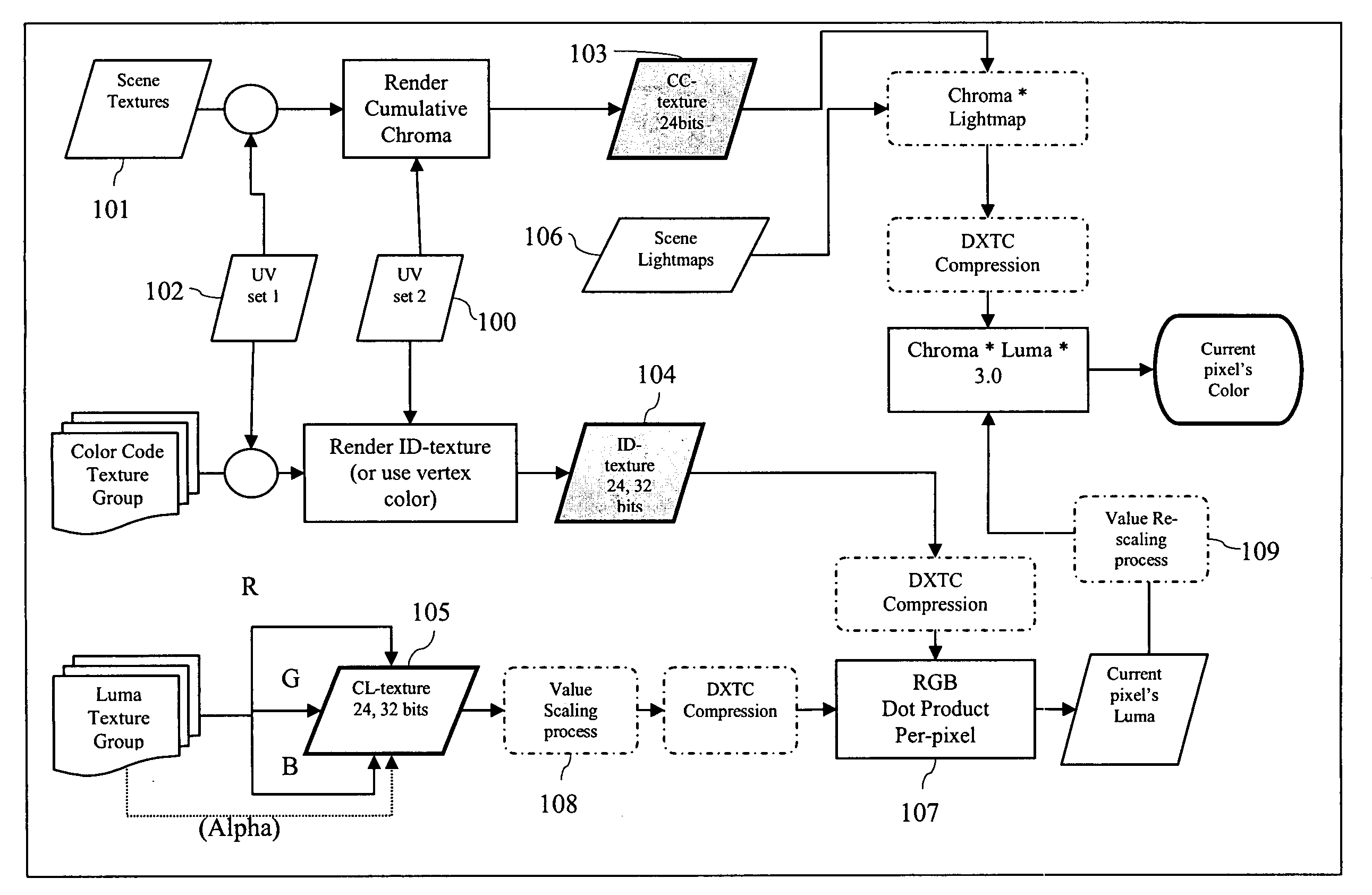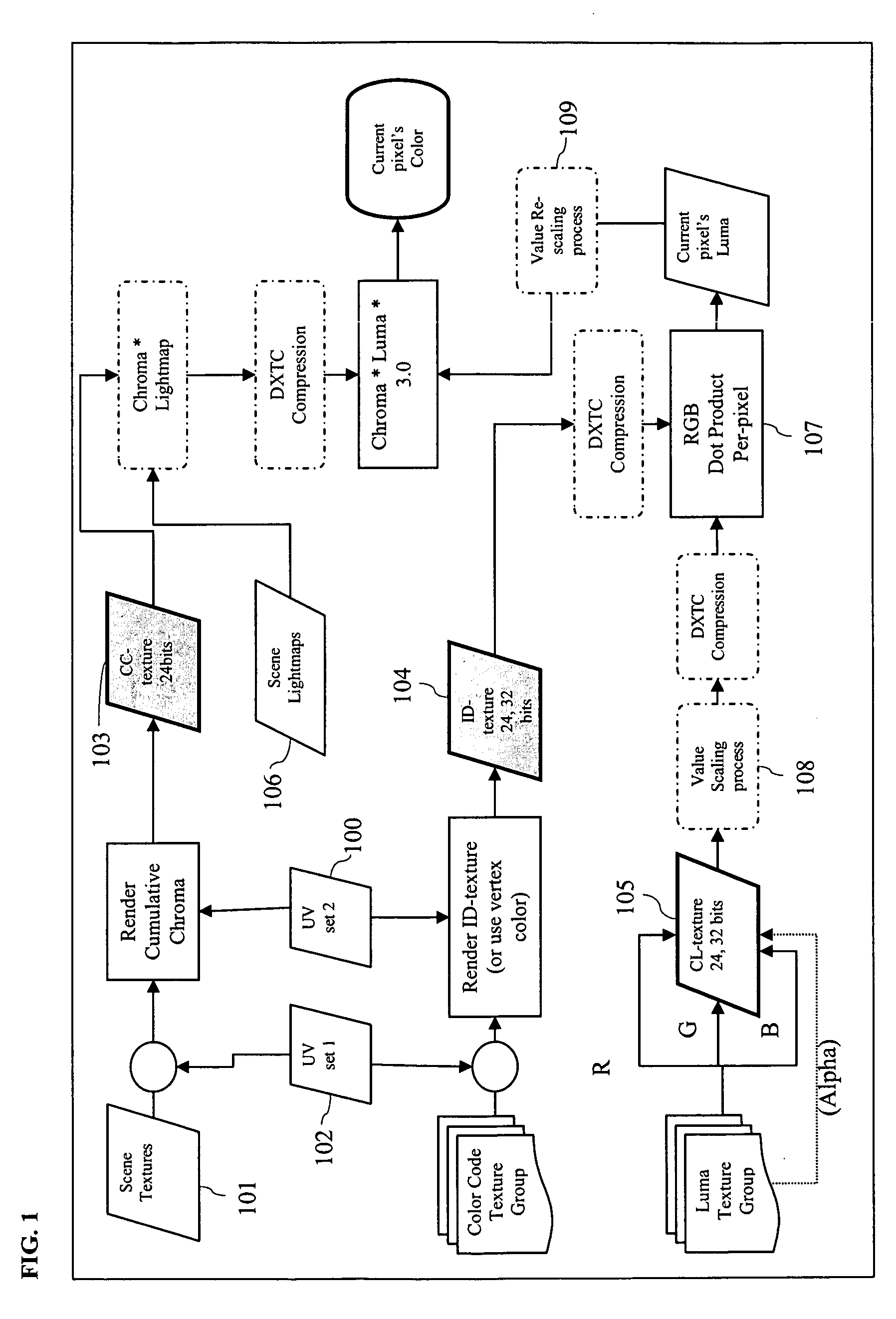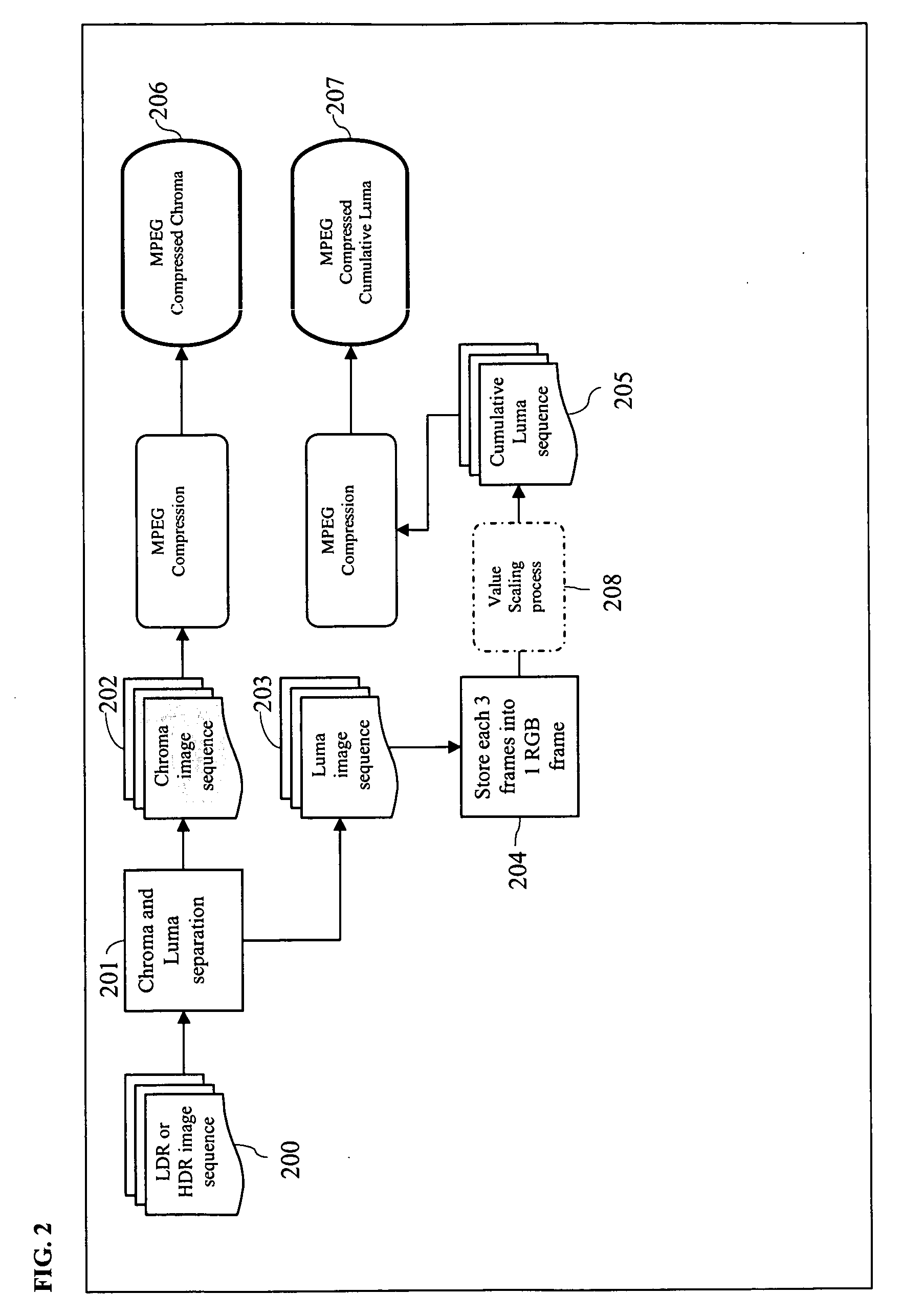Multi-compatible low and high dynamic range and high bit-depth texture and video encoding system
a texture and video encoding technology, applied in the field of digital image processing, can solve the problems of increasing the level of artifacts in the recovered image, the need to substantially compress the hdr image data, and the additional coding and per-pixel operations, so as to achieve high bit-depth images and reduce the cost of coding. the effect of a single image and a single imag
- Summary
- Abstract
- Description
- Claims
- Application Information
AI Technical Summary
Benefits of technology
Problems solved by technology
Method used
Image
Examples
example 1
[0050]FRAME.rgb=CHROMA.rgb*f≡FRAME.r=CHROMA.r*fFRAME.g=CHROMA.g*fFRAME.b=CHROMA.b*f
example 2
[0051]FRAME.rgb=CHROMA.rgb*FC.rgb*f≡FRAME.r=CHROMA.r*FC.r*fFRAME.g=CHROMA.g*FC.g*fFRAME.b=CHROMA.b*FC.b*f
[0052]Clamping and “dot” functions employed herein are provided in the “pseudo-code” functions provided below.
Pseudo-Code Functions
[0053]
CLAMP(x, a, b)≡If (x<a) then x=a; else If (x>b) then x=b
DOT(X.rgb, Y.rgb)≡X·Y≡(X.r*Y.r)+(X.g*Y.g)+(X.b*Y.b)
[0054]Each of the figures represents functional block diagrams. Each block within the figures may represent one or more discrete steps / processes that are carried out by one or more devices / systems. Conversely, one device / system may carry out the functions / processes represented by multiple blocks. In various figures, dotted blocks represent optional steps / functionality or possible outputs (after an optional step / functionality is applied). Shaded blocks represent direct encoding outputs.
[0055]As would be appreciated by one of ordinary skill in the art, the herein described processes are particularly well suited for 3D applications. In ...
PUM
 Login to View More
Login to View More Abstract
Description
Claims
Application Information
 Login to View More
Login to View More - R&D
- Intellectual Property
- Life Sciences
- Materials
- Tech Scout
- Unparalleled Data Quality
- Higher Quality Content
- 60% Fewer Hallucinations
Browse by: Latest US Patents, China's latest patents, Technical Efficacy Thesaurus, Application Domain, Technology Topic, Popular Technical Reports.
© 2025 PatSnap. All rights reserved.Legal|Privacy policy|Modern Slavery Act Transparency Statement|Sitemap|About US| Contact US: help@patsnap.com



